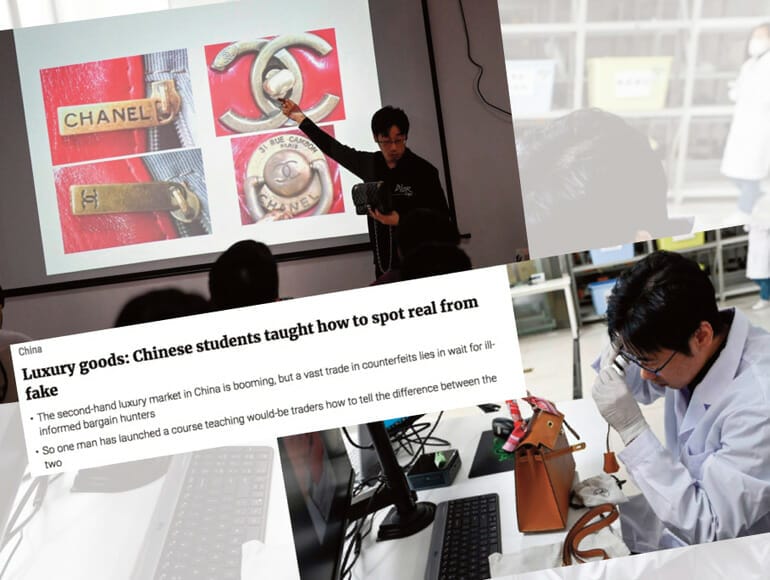His name is Zhang Chen. He has founded, in Peking, the Extraordinary Luxuries Business School. And he organizes very special course, teaching to unmask the most sophisticated counterfeiting of luxury accessories in one week
Some could almost think that it is a paradox. And, in some way, they could even be right. In the end, when we talk about counterfeiting, raise your hand if you do not think immediately about China, as an industrial tank for the production of any type of fakes. Unexpectedly, the news of the launch of a course to unmask luxury fakes is coming straight from Peking. This professionality is not new for sure, considering the need for the flourishing channel of second-hand to examine each accessory they resell. A job that, in this case, apparently is making the leap in quality.
Unmasking luxury fakes
The name of the promoter of this course is Zhang Chen, he is the founder of the Extraordinary Luxuries Business School of Peking. The course lasts one week, it costs about 2,400 USD and, at its start, it attracted a quite transversal public of students. Common denominator: the perspective to meet a requirement that, in a very near future and for much time, can only be growing and, therefore, quite profitable. Zhang’s first lessons, so, were attended by a financial consultant looking for new perspectives, by a journalist, previously a director at a fashion magazine, and by a forger looking for (legal) redemption. They all were keen on learning techniques that Zhang manages in a very efficient way, as it seems.
Japanese apprenticeship
Zhang has told some Asian magazines, such as The Japan Times, that he learned to evaluate luxury goods 10 years ago, in Japan. Not only: he declared that he only needs 10 seconds, at most, to understand if a product is real or faked. He can do that even watching a simple picture.
Chinese lesson
During his lessons, Zhang takes especially watches and small leather goods into consideration. He goes into details that are easily missed by consumers, dazzled by the brand’s name. For instance: the colour of the lining of Chanel’s black bags (“Which must be pink”). Furthermore, knowing which letters in Chanel’s logo come in a rectangular or a square character could allow to “discover one third of the fakes on the market”. Little examples of a job requiring daily upgrades, Zhang says, because “the market of identification of luxury products will always exist, only methods will change”. No surrender, in spite of the increasing use of digital recognition and tracking techniques for accessories. Because “there is no technology that cannot be violated”, he closes.
Read also:
